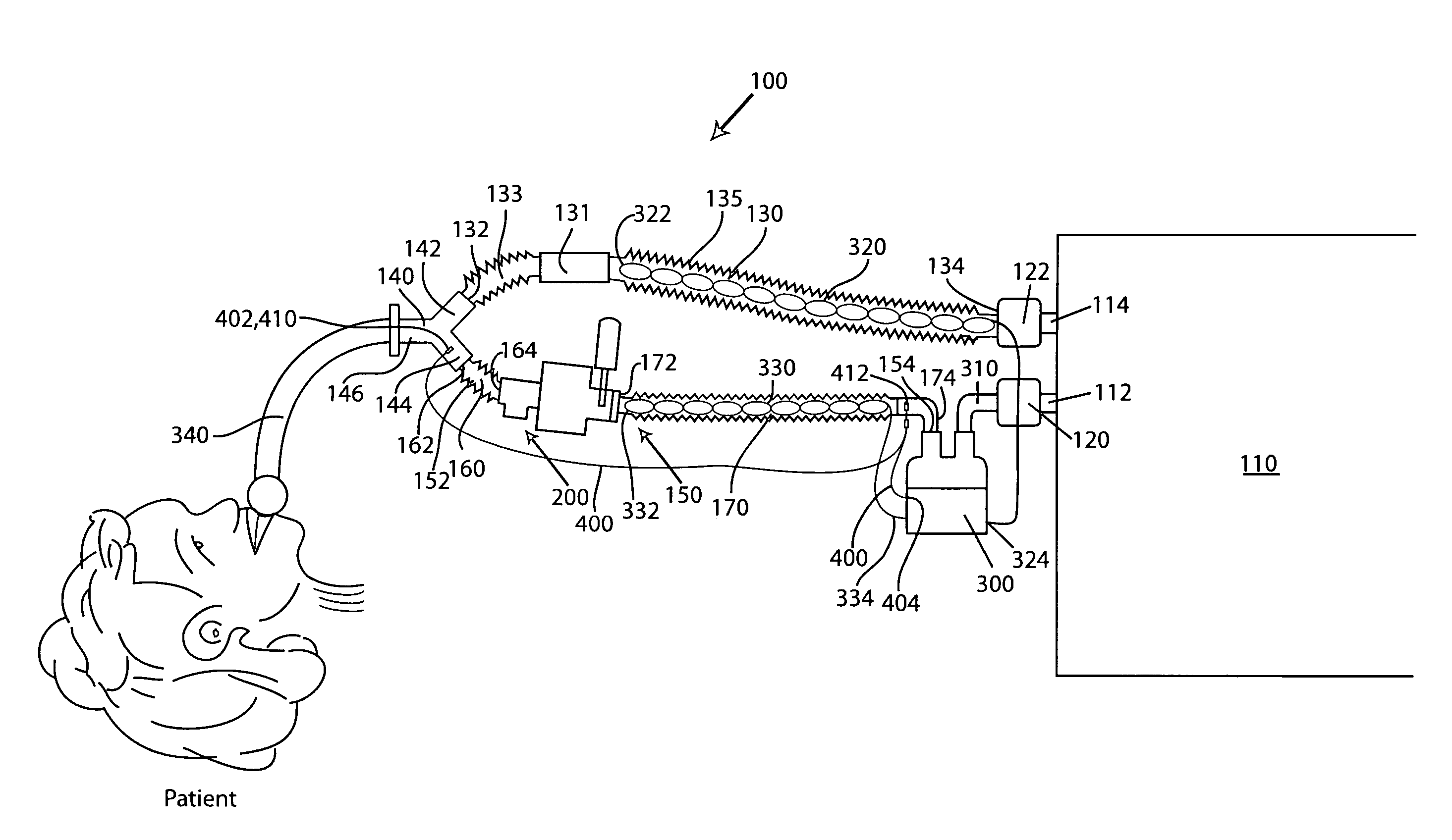Patient interface assemblies for use in ventilator systems to deliver medication to a patient
a patient interface and patient technology, applied in the field of inhalation equipment, can solve the problems of low dose of medication delivered to the patient over a fixed time, the disadvantage of the method of medication delivery into the ventilator system, and the effect of increasing the weight of the patien
- Summary
- Abstract
- Description
- Claims
- Application Information
AI Technical Summary
Benefits of technology
Problems solved by technology
Method used
Image
Examples
first embodiment
[0058]A third leg 526 of the Y-connector 520 is attached to one end of a heat moisture exchanger (HME) 600 that is used instead of a humidifier unit for heating and adding moisture to the compressed air. The HME 600 is available from any number of different commercial suppliers and consists of a unit that includes a heat and moisture exchanger filter for use with mechanical ventilators to provide heat and humidity while retaining bacterial / viral contaminants. Unlike the humidifier unit 200 that is placed only in the inhalation tube of the patient circuit in the first embodiment, the HME 600 is in fluid communication with both air that is inhaled by the patient as well as air that is exhaled by the patient.
[0059]The system 500 includes a second Y-connector 540 that includes first, second and third legs 542, 544, 546, respectively, with the third leg 546 being attached to the other end of the HME 600. A third Y-connector 550 is provided and includes first, second, and third legs 552, ...
third embodiment
[0067]Now referring to FIG. 7, a ventilator system 700 is illustrated. The system 700 is very similar to the system 500; however, some of the conduits have been integrated with one another so as to share a common wall. In order, some of the conduits have been merged from a pair of conduit structures into a single conduit structure. For example, the first inhalation tube 510 and the first exhalation tube 530 can be merged together and share a common wall. Thus, when it is desired to change the distance from the HME 600 to the ventilator device 110, only a single action due to the combined nature of the two conduits 510, 530. In the previous embodiment, each of the conduits 510, 530 required its own adjustment and manipulation in order to change the length thereof.
[0068]In addition, a portion of the second inhalation conduit 560 and the second exhalation conduit 570 is likewise combined into a single integrated conduit structure. For example and as shown, the second inhalation condui...
PUM
 Login to View More
Login to View More Abstract
Description
Claims
Application Information
 Login to View More
Login to View More - R&D
- Intellectual Property
- Life Sciences
- Materials
- Tech Scout
- Unparalleled Data Quality
- Higher Quality Content
- 60% Fewer Hallucinations
Browse by: Latest US Patents, China's latest patents, Technical Efficacy Thesaurus, Application Domain, Technology Topic, Popular Technical Reports.
© 2025 PatSnap. All rights reserved.Legal|Privacy policy|Modern Slavery Act Transparency Statement|Sitemap|About US| Contact US: help@patsnap.com



